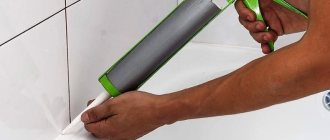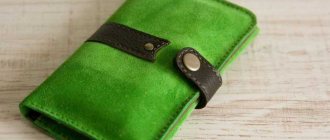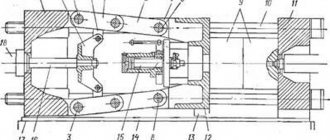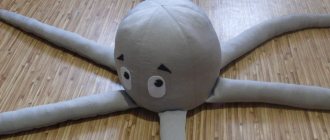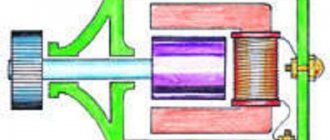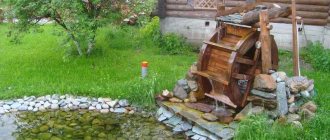The first tactical unloading vest was born in Italy half a century ago. Its prototype is a belt-shoulder system, consisting of a wide belt with two straps that go over the shoulders. Initially, the purpose of the RPS was to place ammunition on it for carrying.
One of the starting materials for a tactical vest
The main feature of the unloading vest is the pockets. They are positioned in such a way that they allow the weight of the equipment to be distributed evenly throughout the body, relieving the load from the spine. Pockets and pouches are positioned so that the back is free. A tactical vest must have the following properties:
- Strength and fire resistance
- Ensuring freedom of movement even on the belly
- Ensuring freedom of action when using technology
- Capacity
- Availability of reliable fittings
But not only military personnel use a pressure vest. This piece of equipment has long been liked by hunters and fishermen for its convenience - it allows you to place all the necessary gear and equipment for hunting inside pouches and pockets, while leaving your hands free. In addition, there is a special unloading vest for spearfishing enthusiasts. To take into account all the individual wishes of a fisherman or hunter, you can make a unloading vest with your own hands.
What is this thing - a tactical unloading vest
About a hundred years ago, the ammunition that needed to be carried was carried on a belt-shoulder system - RPS. This is such a wide belt, to which two straps are attached for throwing over the shoulders. However, the width of the belt is small, and it was not possible to fit everything on it. Then unloading vests appeared - their first models (Italian) saw the light in the middle of the last century.
The main feature of the vest is the pockets. They allow you to distribute the weight of the equipment evenly throughout the body. In addition to pockets, pouches are hemmed - all this is positioned so that the back is free. As a result, there is less load on the spine and more comfort. A good tactical vest should:
- Be durable and fire resistant;
- do not interfere with moving on your belly;
- do not interfere with the use of technology;
- contain no less than a double combat kit;
- have reliable fittings.
A little about the design of the unloading vest
The device of a tactical unloading vest
Colors
Most often, this item of clothing has one of the following colors: black, olive, green. There are also camouflage colors with different combinations of shades. The color should be chosen so that it blends in with the area as much as possible. This rule applies to all use cases.
Material for sewing a vest
The first unloading vests, made of canvas and leather, weighed a lot. Therefore, later they began to use lighter synthetics (sometimes even a special mesh fabric) for sewing them. In particular, one of the most popular materials is cordura (otherwise known as cordura). This is an American fabric made from specially woven nylon threads. It is extremely durable and very light, and its price is quite reasonable.
What types of fastenings are there?
Initially, pockets and pouches on vests were fixed rigidly, and their size was fixed. Such models are called “with integrated pockets”. Here you have to use what you have - you can’t change anything individually for yourself. But when running fast, the pocket will not fall off.
Pouches
Pouches on the unloading vest
The purpose of the pouch is to store a supply of ammunition. Therefore, it is reasonable to select it for a specific type of weapon (this is where the advantage of the modular system manifests itself). However, they are now producing pouches for any necessary items: flasks, first aid kits, documents, various small items. The material used is leather or cordura.
Why does a gun belt need a limiter?
Some models of vests (for example, Tarzan) are equipped with an original “gadget” - a belt limiter. He does not allow the machine gun to insidiously slide off his shoulder. According to user reviews, this often happens. So the limiter is a useful thing. But in the summer, when the vest is worn without a jacket, it can sometimes create a little discomfort.
Quickly assemble a vest from plastic bottles
Without special materials and time for sewing, you can whip up a rescue product from bottles. This is more of a safety belt than a vest, but if you wish, you can add a second row of plastic containers to it, increasing your own safety.
To make it you will need several 1.5 liter plastic bottles and strong ropes. First, we check the quality of empty containers: the bottles should not have any through damage, and the caps should be screwed on as tightly as possible.
We tie the bottles with ropes in two rows. For fastening we use a sea knot or other types of strong knots; in addition, you can use tape. On each side we leave tails of ropes for ties. A simple rescue tool is ready!
Getting to know the manufacturers
UTG Leapers
The Leapers company, with an office in the US state of Michigan, has been specializing in products for sports, shooting, and hunting since 1992.
She makes vests for unloading very well. They are bought by security forces, airsoft players, and hunters. They are conveniently fastened with a zipper, and the presence of three adjustable straps makes the product universal. Both thin and overweight people will be able to adjust the vest to suit themselves (by varying the height of the torso, waist size and fullness).
Nine pockets (for documents, flashlight, radio, cartridges, rifle magazines) are closed with Velcro and have holes where water flows out. There is also a belt for a pistol and a pouch for it, and an inclined type holster. And if all the equipment doesn’t fit, then you can fasten something on your back - there is such an option.
- There are shock absorbers on the shoulders;
- ventilation meshes are provided for ventilation;
- there is a special grip on the back (to pull out the wounded).
Tarzan
This famous domestic product weighs 1.1 kg.
It is actively used by FSO and Airborne Forces fighters, and airsoft players. They make vests from Cordura 1000 in two colors: olive and Woodland. The fastener is a thick tractor-type zipper plus a Velcro flap. Using the slotted buckle, you can adjust the vest to your height (from 1.64 to 2 m). Size – from 46 to 48. MOLLE slings are sewn in front along the entire height and in the back at the top, which allows you to temporarily attach something to the back (for example, a generator). To prevent the contents from falling out, the pouches are equipped with elastic bands.
They have grommets at the bottom - water flows out there if it gets full. Inside the vest there are two pockets where you can hide documents. They have a Velcro fastener.
For convenience there are:
- Rescue loop on the back;
- weapon belt limiter;
- large loop with a lock.
A review of the Dolg M2 tactical weapon belt, popular in Russia and abroad, is here. Video review from the creator and instructions for use.
Vest named "Tank"
And another model in olive color made of Oxford fabric and nylon with a MOLLE fastening system, which is sewn for special forces soldiers. A very versatile product - it can be adjusted to sizes from 46 to 60! The fastener is a zipper and two fasteners. I am very pleased with the special system for attaching pouches - completely silent. The length of the straps can be adjusted by securing them with Velcro.
Tactical homemade and new products)
What is the fundamental difference between “civilian” and “military” backpacks? Camouflage?
I divide backpacks into tourist (bright color, no MOLLE, wide straps) and tactical (respectively, camouflage, MOLLE, butt straps and “scalability” of the system - one can always be attached to the other, parts are interchangeable)
Well, that’s also a very conditional division) I’m telling you, you needed molle compatibility, ease of execution and, okay, it was tactical, wow!) It seems like everything)
And I called civilian backpacks those that were created for gentle operating conditions. Such an experience: in the absence of armor, a backpack filled with bricks/sandbag is used as weighting materials. Barbarism, that's understandable. But the RDshka is alive, the unidentified foreign sample of the three-day backpack is alive, and a completely usable and durable ordinary backpack is in rags. In principle, initially they were taken for slaughter, but the fact that those backpacks survived him is an indicator. But again, I’m not proving anything, I’m just talking about preferences))
Witnake or again from nothing. Part 6
Good day to all!
Whoop, and we return to our Witnake and its deck. Created, ahem, from matches. Yes, the decision is extremely strange, but the level of budget of the ship in this category and my personal strange preference to make it specifically from matches contribute to it.
I will make a reservation that this is the dirtiest process of all related to the ship. Washing your hands ten times an hour while gluing the body is nonsense. But to understand that slivers from matches and similar garbage have enslaved the space - that’s another thing.
And also in the process you learn that in one sitting you can watch a series 775 episodes long. so, wait, what am I talking about.
Oh yes, the creation process is quite simple: we take an excess of matches, bite off the head of them and slightly flatten them back so that the cross-section is still square (and not like one of the suits of playing cards), then we take a match and coat it with glue with a pencil, glue it to cardboard.
I chose the pencil glue not by chance, but for the reason that it takes a long time to dry, but when completely dry, it sets well. Why is this necessary? So that if something doesn’t fit completely somewhere, you can lightly press it down and it will move, but not lose its grip on the cardboard base. In short, it gives you the right to make mistakes (though only until it is completely dry).
I've made a deck out of pencil before, but the gap turned out to be so large that I forgot how to do it best. And when I already got a taste for this deck, I began to remember. The point of laying with matches is in their strange shape - in almost all cases they are bent, bent, split, disheveled, cracked, broken, etc., etc. In a word? Different. For this reason, their installation is similar to a mosaic, where you find a match of the desired shape, place it to understand whether it will fit correctly or not, and if it fits, then glue it. If not, we are looking for the next one, since there are many of them.
I started approximately from the center and stuck to it. This was the right tactic, given the curvature of the future sides (this is obvious). Therefore, in some places it was necessary to cut, shred, and grind down the unfortunate matches so that they would simply fit in certain places. True, I didn’t go overboard, if they felt like passengers on a bus at rush hour - I stopped and looked for a different approach.
There's a certain charm to a matchstick deck. They're not perfect. And they don't lay perfectly flat like cut (any other) material? But at the same time they convey their direction. Ugh. And in the photo you can see how we had to cut out inserts for small places. Well, those where only a 4 mm long match fits. With its thickness of 2 mm.
And the matches themselves confirm the level of the ship’s budget. Starting from the fact that everyone has them (the only question is quantity) ending with their low cost in the store. At one time I purchased them for other purposes, but having paid mere pennies, I acquired a supply of wood, it seems to me, for three of these Witnake in advance. If I do them. (Will?)
DIY unloading vest
The first tactical unloading vest was born in Italy half a century ago. Its prototype is a belt-shoulder system, consisting of a wide belt with two straps that go over the shoulders. Initially, the purpose of the RPS was to place ammunition on it for carrying.
The main feature of the unloading vest is the pockets. They are positioned in such a way that they allow the weight of the equipment to be distributed evenly throughout the body, relieving the load from the spine. Pockets and pouches are positioned so that the back is free. A tactical vest must have the following properties:
- Strength and fire resistance
- Ensuring freedom of movement even on the belly
- Ensuring freedom of action when using technology
- Capacity
- Availability of reliable fittings
But not only military personnel use a pressure vest. This piece of equipment has long been liked by hunters and fishermen for its convenience - it allows you to place all the necessary gear and equipment for hunting inside pouches and pockets, while leaving your hands free. In addition, there is a special unloading vest for spearfishing enthusiasts. To take into account all the individual wishes of a fisherman or hunter, you can make a unloading vest with your own hands.
Weighted vest, handmade
Modern life in most cities allows residents who are interested in this to pay more attention to sports activities in various areas. Fitness clubs, sections, sports grounds and swimming pools will help you spend your free time with benefits for your health and figure. At the same time, the responsibility for purchasing additional equipment that is not included in the list of services offered by sports organizations falls on the shoulders of citizens. Many of the auxiliary elements can be made independently. Today we will talk about how you can make a weighted vest with your own hands using various materials.
Weights in general and a vest in particular help you easily gain additional weight when performing a number of dynamic physical exercises. Running, jumping, squats, push-ups from a bench, floor and parallel bars - all these complexes over time do not give the body muscles the necessary or desired load, and do not lead to the growth and strengthening of muscle mass. Using adjustable or non-adjustable devices, you can easily give the muscle frame a beautiful relief and develop the endurance of the whole organism.
All weighting materials can be divided into two large groups. The first includes devices based on bulk materials - sand, salt, metal (steel or lead) filings, placed in small bags made of durable dense fabric. They are called bulk ones. A feature of such weights is the lack of ability to regulate the load. If it is necessary to adjust it, there is a need to purchase (manufacture) additional devices that have a larger or smaller mass. The second group of weights is based on stacked weights, consisting of individual plates of various shapes, fixed in special pockets, fixed in one way or another. They are called “plate” ones.
The use of such devices allows you to adjust the amount of load for each athlete depending on his individual physical abilities by removing or adding plates. Most often this group is represented by belts and vests.
To make your own plate group weighting material, you need to take care of purchasing high-strength material. Tarpaulin or denim are most suitable. In addition, in connection with the implementation of a fairly high load directly on the athlete’s body, it is worth stocking up on dense sheet foam rubber for additional insulation of the device.
From the prepared fabric it is necessary to cut out a simple vest according to the individual sizes of a particular user. The shape of the neckline and arms do not play a big role.
After this, cut out the parts and sew them as tightly as possible. If you do not have the skills to operate a sewing machine, ask those for whom this work is not new to help you. As a last resort, you can make a vest from your existing outerwear, removing all that is unnecessary.
A mandatory element of the vest are pockets for storing cargo. The parameters of these parts should be selected depending on the available weighting materials.
If it is not possible to purchase or independently manufacture flat plates from lead, you can use scraps of round steel rods, which are found in abundance at some metalworking enterprises.
Having measured the diameter and length of the weights, open up the blanks for making pockets for them, making an allowance for the seams, as well as for the fasteners that will hold the weights in the niches of the vest intended for them. Fasteners must ensure that loads do not have the opportunity to slip out during exercises and prevent the causes of injury to athletes. For this purpose, it is possible to install a zipper, Velcro, buttons or lacing.
The main aspect is both the total weight of the loads and their most convenient location on the vest. Once you have assembled the selected cylinders, weigh them to determine the maximum possible load that your weighted vest will carry.
When distributing pockets for weights, try to provide for the possibility of free movement of your arms when performing various strength exercises. Otherwise, using the device will cause discomfort and inconvenience.
To prevent impacts from the elements of the vest, it is necessary to ensure that it fits as completely as possible to the body. This can be achieved by using additional belt fastenings equipped with Velcro or other fastening options.
Also, to protect the user’s body, we recommend that when making a vest, it should have a lining. Place a layer of dense foam rubber between it and the face fabric and stitch from the inside to prevent it from clumping during active training sessions. This extra layer will soften the pressure of hard metal weights on your body.
Thus, following the technology we described, you can easily make your own device such as a weighted vest and your workouts will become more comfortable and convenient. Using the same principle, you can sew a belt, equipping it with small weights. It can be used not only during physical exercise, but also in everyday life, while walking in the park or in the forest to enhance the cardio effect and train the leg muscles.
Dear readers, comment on the article, ask questions, subscribe to new publications - we are interested in your opinion 
DIY hunting vest-unloading
There are two types of unloading for the hunter - summer, camouflage in color, and winter, white. This equipment allows you to carry a large supply of ammunition, which is distributed in pouches that are convenient for use, while the hunter does not experience any overexertion when walking with such weight. The summer version of the unloading vest usually consists of ventilated fabric, and the winter version is multi-layered and insulated.
The task of making your own hunting vest is not that difficult if you have some patience and accuracy. To do this, you need to choose a material, the ideal option of which would be waterproof military, khaki or camouflage fabric. The calculation of footage is usually made based on the width of the fabric one meter by 2.5-3 meters.
Next, you need to take your measurements while wearing outerwear. Accordingly, if the vest is for summer, then the clothes should be summer. If the vest is intended for use in the winter season, measurements are taken over winter outerwear. After this, it is necessary to apply the details of the pattern in full size on paper or any fabric, in order to then baste the finished pattern and do a fitting. If you can’t make a more or less suitable pattern, you can always use ready-made templates from the Internet. At the same time, it is not at all necessary to look for a pattern for an unloading vest; you can use the template of a regular vest.
After basting on paper or fabric, you need to transfer the pattern to camouflage fabric, then sew pouches and cells onto individual parts of the unloading.
Then the cut out parts are sewn into the finished product, the seams are treated to prevent unraveling.
Lastly, fasteners and other fittings are secured.
Building a pattern for a men's vest
We need measurements:
- height (P);
- semi-circumference of the torso under the chest (size);
- chest circumference (CH);
- waist circumference (WC);
- hip circumference (HC);
- back length to waist (DST);
- front length to waist (DPT);
- back width (BW);
- shoulder width (SH);
- neck circumference (NC);
- hip height (HH).
Building a basic pattern
Back
We mark point (∙) A in the upper right corner. Down from it along a vertical straight line we put 1⁄8 Р + 2.5 cm (= increase for loose fit). Mark (∙) C - this will be the armhole depth line. From the same (∙) A we put the DST down, mark (∙) D. From it down we measure the VB and mark (∙) E.
From (∙) A along the horizontal straight line we put off 1⁄6 of the size, we mark (∙) G. Along the perpendicular upward from this (∙) we put off 2 cm. We put (∙) G1. We draw a pattern line for rolling out the neck from (∙) A to (∙) G1.
We measure to the left of (∙) A 1⁄2 ШС, mark (∙) N.
From (∙) C to the left we measure 1⁄4 OG + 5 cm (= increase for loose fit), mark (∙) C1. From (∙) D and (∙) E to the left we draw horizontal straight lines until they intersect with the vertical line from (∙) C1. We mark (∙) D1 and (∙) E1. From (∙) C1 we put 2 cm down and put (∙) C2. Select the side seam line C2, D1, E1.
From (∙) H downwards we draw a perpendicular to the segment CC1. We mark (∙) I. From it up perpendicular we measure 1⁄8 of the size, we put (∙) M. From this (∙) to the left side we put 1 cm in a straight line, we put (∙) M1.
How to sew a unloading vest with your own hands: an option for fishermen
Depending on the weather conditions and the method of fishing, the following types of unloading vests are distinguished:
- A universal vest, used in any season, except winter and sultry heat, and for any type of fishing.
- Summer unloading: differs in the sewing material used, which allows air to pass through.
- Insulated - made with a multi-layer lining, used in the cold season. It features a smaller number of pouches so as not to restrict the spinner’s movements.
- Vest-backpack: wears like a regular backpack, but has a vest on the front instead of straps.
An unloading bag for a fisherman should contain many pockets, have strong seams, and it is also preferable to have a moisture-resistant pocket for storing things that are afraid of moisture, as well as convenient pockets with Velcro rather than zippers. If the fishing is fly fishing, a mandatory part of the unloading is the presence of attachments for baits.
First, you need to select the right fabric for sewing the unloading and its lining, as well as plastic containers of the required size to place them inside pouches or cases. At the same time, it is necessary to purchase all the accessories - locks, half rings, Velcro, a sling with carabiners in order to use it to adjust the size of the vest on the sides. After this you can start cutting. In order not to invent something new, you can take a pattern template for any vest from the Internet. In addition, you need to find patterns for pockets with extensions, covers, then transfer all the patterns onto paper with measurements of the shoulders, armholes, length, width of the product along the back, front and sides, taking into account that an adjusting strap will be sewn on the side. This tape will allow you to wear the vest over winter or autumn clothes, and also adjust the product to any size. You can choose a pattern option when there is no back; instead, a wide belt is made, connected by straps to the collar.
How to choose unloading
When choosing an unloading system, you need to rely not only on cost (fully equipped products with removable pockets are an order of magnitude more expensive than monolithic vests), but also on how well its performance characteristics correspond to the conditions in which it will be used. The best unloading vest must meet the following requirements: • comfort; • no discomfort when moving; • no load on the back; • sufficient safety margin to ensure the safety of the transported load.
You can buy an unloading system in the Military Warehouse online store. Our catalogs present the best examples of equipment for the armies of European countries. We purchase decommissioned military vests from NATO reserve warehouses, so our prices are much more favorable than market prices, and the quality of the product has been repeatedly noted by positive reviews from our customers.
For your convenience, delivery is carried out by SDEK courier service or Russian Post. An unloading vest is an excellent choice for those who value comfort and convenience in their work and outdoor activities.
Advantages
The choice of the desired vest for hunting can only be ensured by the hunter himself. Whether it will be open or closed to carry projectiles is your decision. And the design itself will allow you to do without even precise parameters, because there are tie straps that regulate the girth in the widest places.
Continuing the pocket theme, a great solution is the hidden details for documentation and patch options on the back, which are equipped with the unloading version. This is a convenient way to store things that should always be at hand. Contact specialized stores for purchase, where they will definitely select a worthy model for you.
Of course, the main disadvantage of such a hunting vest is the presence of excess weight, especially when you walk twenty kilometers, and every extra kilogram makes itself felt. This is also very significant during a successful hunt, for example, a wild boar. But the advantages are undeniable, especially for unloading models, which will be discussed below.
Unloading vest
Classical
There is no doubt that this type of hunting unloading is especially popular in hunting circles. Its main advantage is easy fixation of the size you need. And the side fastener system will give the owner a comfortable fit to fit the body type in almost any situation.
Why is it unloading? Because it does not have pockets for cartridges, but instead has a hinged pouch for hunting unloading. Their clever and multifunctional arrangement is the key to the popularity of this model. When choosing, pay attention to multi-layering in winter versions and the presence of ventilation of the fabric in summer ones.
Underwater
Unloading for hunting is also relevant for the underwater version. After all, a hunter’s complete equipment should have the goal of saving the owner’s precious strength. And the right unloading vest for hunting will help with this. Unloading models for spearfishing have fasteners that prevent displacement during dives and, just like for regular hunting, they are adjusted to an individual size.
If an emergency situation arises, then with quick disposal and unloading, it will not be difficult to float to the surface . Unloading for the hunter has been achieved!
In addition to hunters, this type of clothing is also in favor among fishermen. So, for example, a protective vest, equipped with several pockets on the front and a large pocket on the back, is indispensable for a fishing enthusiast, an ornithologist, a geologist, a cyclist, a tourist, and simply for a person who loves active recreation.
Variety of species
For every type of hobby there is plenty to choose from in stores. Vests are:
- Warm and cool. The type of material depends on the season. In the winter version, the lining is made of waterproof fabric. For summer, a mesh is comfortable and will allow the body to breathe.
- Various colors. They provide the opportunity for camouflage in any area, taking into account the time of year and weather.
- Light and weighted. The latter are sewn specifically for lovers of underwater hunting.
Classic bandolier vest
When hunting, sometimes seconds make all the difference, so you need to have ammunition on hand. The classic bandolier vest is equipped with chest pockets for storing cartridges, which allows you to quickly reload the gun. A special material sewn into the place where the butt rests, called a “cushion,” softens recoil during shooting.
Unloading hunting vest
The difference between this type and the previous one is that it is equipped with a large number of compartments and pockets. Such hunting vests have special fastenings and are used to accommodate additional equipment. They have space for a walkie-talkie, knife and other devices. There will be somewhere to put food for your faithful assistant - the hunting dog.
Such models are heavier than classic ones and are made of dense materials. They evenly distribute the load and completely replace a backpack or bag.
For spearfishing
This vest has a minimum number of pockets, drawstrings and straps. The diver does not need them; moreover, they increase the risk of becoming a prisoner of algae and driftwood lying on the bottom. To easily dive to the desired depth, special lead ballast is installed on the front and back of the vest. In the event of an emergency underwater, the diver quickly throws off the vest, thanks to convenient clasps, and floats to the surface.
This item of clothing is made from non-buoyant materials with high density. These vests are also worn when going fishing.
How to do unloading yourself
Not everyone can afford to purchase expensive hunting equipment. In these cases, skillful hands will come to the rescue. With some experience, patience and accuracy, making an unloading vest with your own hands is a fairly simple task.
How to do it?
- First, we select the material. The ideal choice is water-resistant military fabric, khaki raincoat or camouflage. Calculate with a width of 1 meter approximately 2.5-3 m of fabric to be harvested.
- We take body measurements. They need to be done in outerwear.
- Thirdly, we cut out life-size parts using paper or fabric forms. This will allow you to sweep away the finished pattern and try it on.
- Fourthly, we transfer it to the fabric and sew the pockets and cells into separate parts.
- Fifthly, we sew the cut parts into the finished product and process the seams.
- Sixth, fasten the fasteners.
As you can see, making a hunting vest yourself is not as difficult as it seems at first. The main thing is to choose high-quality material, synthetic threads and make the model closed for unstable weather.
Save money: sew unloading yourself
It’s no secret that you will have to pay quite a bit of money for a finished vest (several thousand rubles). But if your hands are not afraid of work, then you can build a quite decent unloading vest.
Making a pattern
Patterns can be made from newsprint or old wallpaper. Look carefully at the finished models and draw something similar, adjusting the pattern to your liking. Shred and cut until you are happy with the result. Everything should fit well and nothing should stick out!
We select materials
The best fabric is cordura. Choose the color to your taste. But you can take durable nylon, nylon, and other durable synthetics. Who knows - maybe you have a piece of suitable material lying around for such a case. This will save even more money. Don't forget about the lining.
You will need more slings - you need a lot of them. After all, we will be making a vest with the Molle system.
And you need to buy high-quality and reliable buckles (preferably three-slit ones, for example, from Duraflex).
We will sew with nylon threads. And prepare a chalk or marker for markings, and a detachable zipper for the fastener.
How to unload in 1 minute on the battlefield:
We cut and sew
We cut out the necessary parts from the front and lining fabric, and then begin to sew on the slings (on the front side). This will be a long time - get ready. To make it smooth, we make markings. Then we decorate the collar (you can put soft filling inside) and the back. On it we sew six buckles on the horizontal slings and two on the slings coming from the collar. Making a rescue handle. Then you can sew a pocket (or two) on the lining. Let's make it with a zipper so you can put documents there. All that remains is to connect the lining and the face, sewing a zipper between them. And then decorate the bottom of the product with a belt (so that it fits tightly).
Review of popular models
Vest-bandolier "Christmas tree"
This type holds 48 12 gauge shells. Fastex as a fastener is very convenient to put on and take off. The cartridges do not press with weight, which is evenly distributed. The vest is comfortable for any body movement and has half rings for hanging loads. The pockets are located in the front, and the back is equipped with wide straps for easy sizing.
Unloading vest "Umka M33"
The unloading vest for hunting Umka M33 is equipment for lovers of travel, hunting trips, and members of response teams. In front there is a power-type zipper as a lock. The volume can be adjusted using lacing. The shoulders are adjusted to the height of the owner, and also have a shock-absorbing cushion.
The model is equipped with mesh pockets inside, and pockets of different sizes on the lumbar part. Available in two colors – camouflage and black.
Unloading vest "Safari"
Unloading vest for hunting Safari is a hunting vest in a combat style, adapted for hunting. The pockets are evenly distributed, in front there is a reinforced zipper and two fastex fasteners. Front pockets are numerous and functionally designed for documents, for 12 gauge shells, for a knife, for small items, one large one in front and on the back for additional equipment. The removable holster is not forgotten either. There is a belt for an even better fit.
A reinforced zipper and two fastex go in front like fasteners. It is possible to adjust the height at the shoulders, and remove the width of the model at the sides.
Vest "SILVERS" for spearfishing
This spearfishing model offers exceptional energy savings. It is designed so that the load is evenly distributed in the correct proportions. According to professionals, to properly distribute the load is to place 60 percent on the waist part and the remaining percent on the top.
It is worth adding that both beautiful women and ladies are not deprived of attention in terms of hunting clothing. Today, there are also women's fitted models of unloading vests on sale, in which ladies will feel comfortable.

